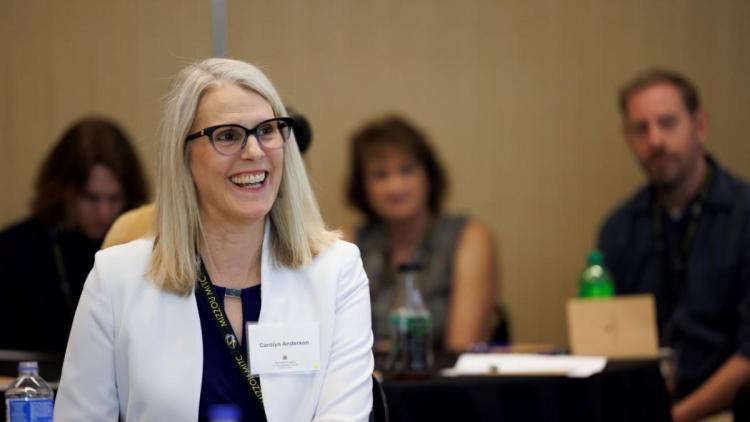
Carolyn Anderson, director of MITC

Research posters from MITC trainees

Cooper Drury, dean of the College of Arts & Science
As the University of Missouri moves forward with plans for the new NexGen MU Research Reactor, the Molecular Imaging and Theranostics Center (MITC) Open House and Symposium showcased Mizzou's present-day accomplishments.
“What perfect timing for this event,” said Matt Sanford, interim director of the MU Research Reactor (MURR), speaking to the symposium’s attendees.
Using medical isotopes — including those produced at MURR — the ultimate goal of MITC is to develop new radiopharmaceuticals for the diagnosis and treatment of human cancers.
“In the simplest terms,” said Cooper Drury, dean of the College of Arts & Science, “MITC will save and improve the lives of our families, neighbors and people around the world.”
During the symposium, interdisciplinary experts from across Mizzou and around the country shared innovative steps toward MITC’s lifesaving and life-changing goals. Participants and attendees included faculty, staff and trainees — as well as industry partners and alumni donors.
Before the symposium’s speakers took the podium, MITC opened its doors to provide a first-hand glimpse at the center’s work, including ongoing projects displayed in 22 posters from MITC trainees.
“It was so gratifying to showcase all we are doing at MITC during the open house,” said Carolyn Anderson, director of MITC. “We look forward to future collaborations and new projects that result from this event.”
The centralized facilities, expertise and management of MITC support the needs of investigators at the university, within the UM System and beyond — particularly those who wish to incorporate state-of-the-art in-vivo imaging to advance their research — with an emphasis on pre-clinical studies.
After touring the center and examining the research on display, Sanford shared a new vision for the future: “I think the time is coming when we’ll stop talking about what we need and what we don’t have, and we’ll be saying to ourselves, ‘All we need is what we have.’”